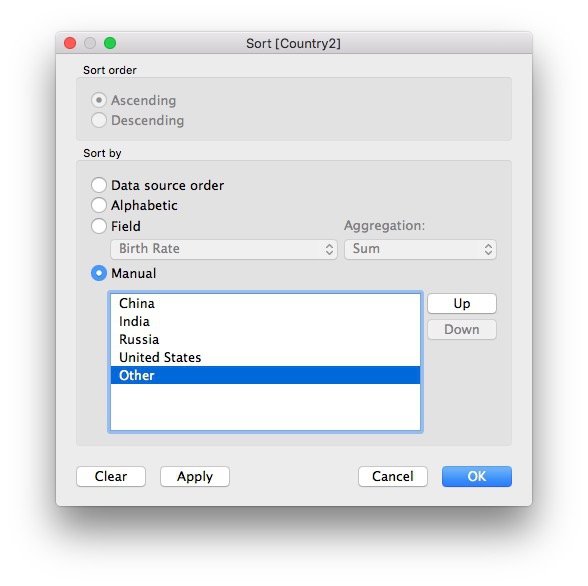

- #TABLEAU PUBLIC DATA SETS HOW TO#
- #TABLEAU PUBLIC DATA SETS SOFTWARE#
- #TABLEAU PUBLIC DATA SETS TRIAL#
You must register in order to be on the review list. Then you must sign up for the webinar (found on the website) at least 4 hours in advance. *To submit a viz to be reviewed, you must post a picture of your viz, a link to your viz, and the hashtag #MMVizReview on Twitter. You can choose to participate in their weekly webinar where their review vizzes submitted to them every Wednesday. They release the data on Sunday, and then you have a whole week to build a viz. MakeoverMonday is an amazing way to start your portfolio and start practicing your skills in Tableau. Almost all their datasets are clean and organized for easy import into Tableau. This project was started by Andy Kriebel and Andy Cotgreave in 2016, run by Andy and Eva Murray from 2017-2019, and run by Eva and Charlie Hutcheson in 2020.Įvery week Eva and Charlie upload a visualization to “makeover” and the corresponding data set.
#TABLEAU PUBLIC DATA SETS HOW TO#
You are working with sensitive or confidential data.If you’ve started your portfolio on Tableau Public and are having some difficulties in deciding what to create or how to get data, check out the following projects run by community members!.Your target audience doesn’t have a reliable internet connection.You don’t have a reliable internet connection.You want to share your results publicly.


Your data set is available in Excel or a text file.You want to create interactive maps, charts and visualisations from raw data.Tableau Public is a an excellent tool that allows you to view data in a more interactive and interesting way.
#TABLEAU PUBLIC DATA SETS SOFTWARE#
Note: Tableau Software offers one-year free trials to students through their academic program. There are also other limitations, such as not allowing data sets with more than 1 million rows.Īll these problems can be overcome if you’re willing to pay for Tableau Personal Edition, but with a price tag of $999 it’s beyond the budget of most smaller and/or local NGOs. This can be a problem if you’re working with sensitive data. The free version also requires that all your visualisations can be seen by anyone online. I’ve spent hours tinkering with visualisations to make them perfect, only to have all my work lost because the internet dropped out and I couldn’t save it. In developing countries where the internet is unreliable this can be a serious problem. When you use the free version of Tableau Public all your visualisations are saved online. However, it does have one very serious limitation for people working in international development – it needs the internet. Almost any type of chart you could imagine (and many that you couldn’t imagine) are available. Tableau Public has an excellent range of features. Here’s what it looks like showing only the results for the NGO partner BWAP: This allowed users to see results for particular NGOs, particular activities, or particular target areas that they were interested in. I setup the dashboard so that the results could be filtered using the buttons on the right.

Here is an example of a visualisation I created to report the results of an endline survey to stakeholders ( click here to see the interactive version): They even run live introductory webinars for absolute beginners. If you aren’t very familiar with pivot tables then you should start by watching the training videos available on the Tableau Public website.
#TABLEAU PUBLIC DATA SETS TRIAL#
I’ve used Tableau Public to liven up presentations and to report program results to stakeholders. If you’re able to use pivot tables in Excel then with a bit of trial and error you should be able to use Tableau Public quite easily. For example, the dashboard may allow the user to select a particular province in Cambodia so that only the result for that province will be shown. Here’s an example where I’m creating a map of poverty rates in Cambodia:įinally, you can combine multiple charts into a “dashboard” that includes buttons for the user to filter the data. The program comes pre-loaded with maps of most countries, so you can also combine data with maps. Once your data set is open you simply drag and drop things to create different types of interactive charts. Then you open your data set from an Excel or text file. You start by downloading and installing the software on your computer. To see some examples of what’s possible check out the Tableau Public Gallery and Viz of the Day. Tableau Public is a free tool that allows anyone to create interactive charts and maps (referred to as a “data visualisation” or “viz”). Do you ever wish you could send your donor a cool interactive map showing the results of your project, rather than just a boring report or PowerPoint presentation? Well, now you can.


 0 kommentar(er)
0 kommentar(er)
